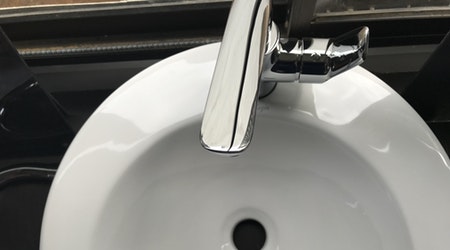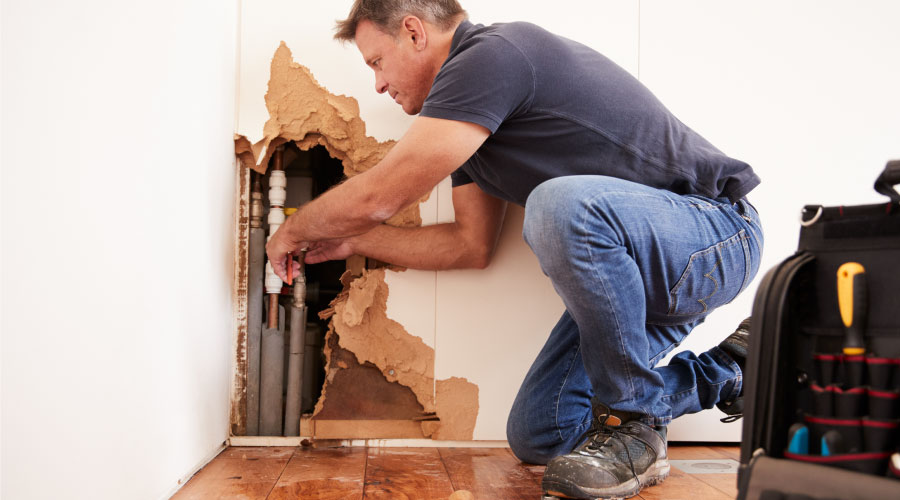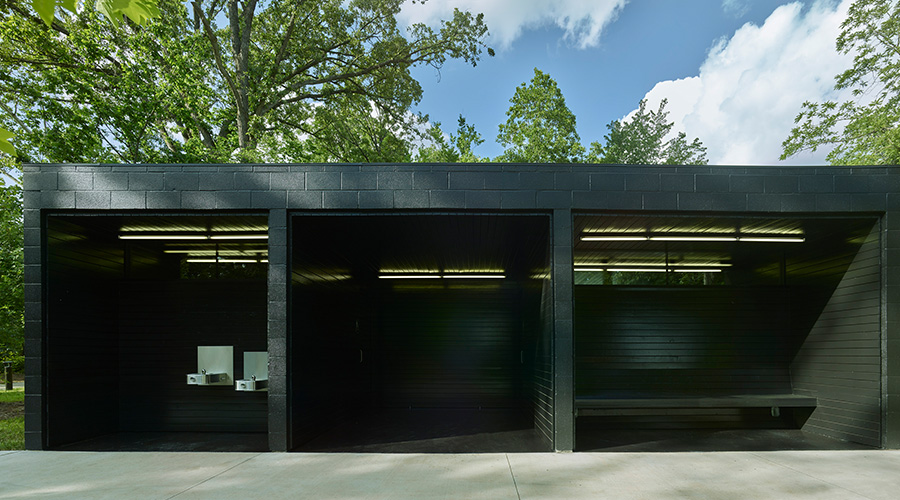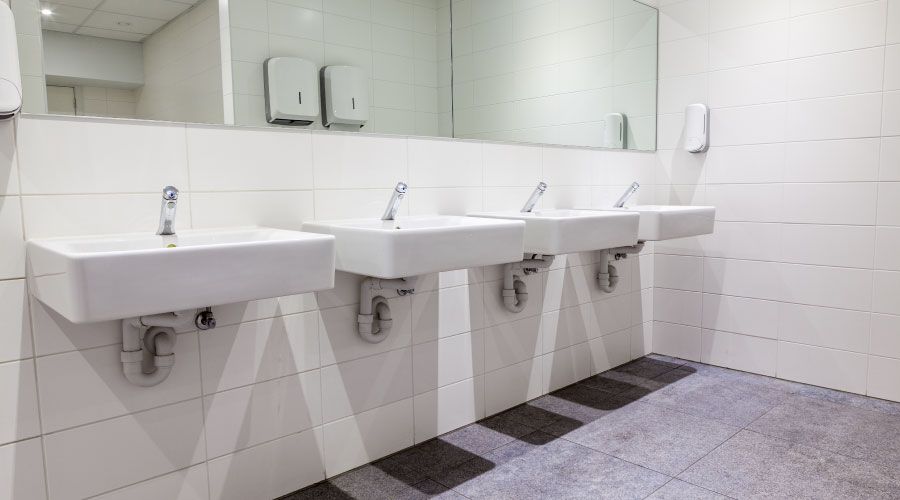Plumbing, Piping and Savings
Ensuring the cost-effective performance of essential systems and technology requires a comprehensive maintenance program
Facility plumbing and piping systems in institutional and commercial facilities have come under growing scrutiny in recent years. As organizations realize the growing costs related to moving water through these systems, managers have taken a closer look at their decisions related to new-product specification, as well as installation and maintenance.
With proper consideration, managers can help their organizations control water-use costs and ensure reliable service throughout facilities.
Restroom Plumbing
Recent generations of plumbing fixtures feature technology that aims to reduce water use, extend performance life and minimize maintenance. Managers should consider these products in planning upgrade projects:
Water filters. Water filters can reduce stains on fixtures and corrosion in pipes. Stains result from minerals or other chemicals in the water, such as iron, sulfur or chlorine. Iron leaves a rust-colored stain on sinks and toilets. Sulfur causes a strong odor and can corrode pipes, drains and appliances that use water. Low-pH water often leaves a bluish-green stain on copper pipes and corrodes pipes and drains. Turbidity can make water cloudy and foul pipes and drains.
Low-flow fittings. Investing in low-flow aerator nozzles for sinks cuts water use, but the volume used varies. For example, up-to-date sink faucets with low-flow aerators can reduce water flow rates by up to one-half, to 0.5 gallons per minute (gpm).
Specifying battery-operated, touchless faucets also not only lowers water use. It also creates a healthier environment by eliminating the possible transfer of germs from handling faucets. No-hands faucets deliver water only when a user places hands under the faucet and breaks a sensor beam. When the beam is restored, the sensor turns off the flow.
Low-flow flush valves. Low-flow designs for urinals and toilets are available in flush valves with battery-operated, no-hands operation. Urinal flush-valve volume varies from 1-1.5 gpm, a 50 percent variation. Toilet flush-valve volumes vary from 1.6-4.5 gpm, a 180 percent variation. By sizing valves’ flow rates for optimum performance, managers can dramatically reduced water costs.
Managers should remember, however, that the goal is optimum flow, not minimum flow. A common complaint related to low-flow fixtures is that they are not strong enough and, in fact, cause pipe stoppages by failing to flush completely. Pending legislation would remove mandatory low-flow rates, so managers should check local codes and consult with building inspectors before finalizing specifications.
Managers also can generate water savings and improve cleanliness at the same time by retrofitting existing valves with the automatic, battery-operated, vandal-resistant type, or replacing the old manual valves with the new automatic type.
Keeping it Flowing
Maintenance and custodial tasks ensure that completed projects continue to perform as designed.
As each new round of regulations takes effect, managers should implement a maintenance program that aims to keep the finished project in top shape.
Daily maintenance of the restroom and equipment is essential. Each day, cleaning crews should follow a planned routine when cleaning all toilets, sinks, flush valves, dispensers, mirrors, light fixtures, stalls, walls and floors are spotless.
Technicians also should replace low batteries and burned out lights.
Most importantly, maintenance managers must use weekly performance reports to ensure proper staffing levels and check that workers use proper cleaning methods and equipment. It is essential that maintenance crews use all resources productively and cost-effectively and that the system upgrade meets objectives for both function and cost.
Power Plant Piping
Piping in facility power plants is designed for the pressure and service required for each application. For drain lines, vent lines and other pressure service, managers can specify schedule 40 pipe with 150 pounds per square inch (psi) working pressure. For high-pressure steam lines, such as 175 psi, managers can specify extra-heavy-schedule 80 pipe with 300 psi working pressure.
Maintenance of piping systems starts with selecting the right piping for the service. A sure sign of incorrect selection is frequent problems, such as leakage due to corrosion, cracking or rupturing in service. If these problems are occurring, selecting the correct specification — even if initially more expensive — will reduce overall cost and improve reliability.
If the piping last a long time but fails without warning, one good predictive technique is to insert a test section of pipe in the line at the trouble area. Periodic measurements of mils — thousandths of an inch — of metal loss in the specimen will indicate the optimum time to replace the pipe.
Technicians also must periodically inspect safety valves, also called pop valves, to ensure service reliability. The best way to test a valve is to increase the steam pressure to the popping point and actually trip the safety mechanism. If the valve trips at a pressure that is too high or too low, technicians should take it out of service and rebuild it.
Testing frequency depends on the operating pressure and condition of the equipment. Daily popping is never needed. In fact, it will cause cause premature leakage by wire drawing the valve seat and disk. A boiler in very poor condition might require weekly safety valve checking, but more importantly, the condition should be upgraded if it is necessary to trip the valve that often.
If a boiler has several safety valves, having a spare one is a good investment. Technicians then can replace a bad valve and rebuild it with minimum downtime.
Steam traps placed in steam lines allow the discharge of condensate and air while preventing steam loss. One of the most common indicators that a steam trap is not working or is installed in the wrong location is water hammer — condensate buildup colliding at high speed at a bend in the pipeline or at some other obstruction. Another indication is the steady discharge of steam and water vapor at the steam-trap vent line.
If these conditions occur, it is time to inspect the internal mechanism and replace it if it is worn or corroded from service. This also is a good time to check its size and make sure it is the correct for the service conditions. If the trap is working, the technician will be able to feel a difference in the temperature of the steam — higher — and in the condensate line — lower. More accurately, the technician can measure the temperature by placing a pyrometer probe on a clean metal spot on the pipe line on both sides of the trap.
In all cases of maintenance for plumbing and piping systems, the goal is to catch small problems before they become larger and more costly.
Info Pipelines
Maintenance and engineering managers can consult a host of resources on plumbing and piping specification and on maintenance issues. They include:
|
Related Topics:












